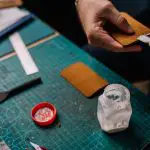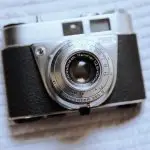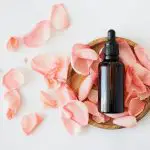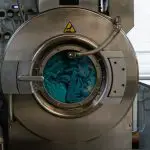If you’re a DIY enthusiast or crafter, you’ve probably heard of E6000 adhesive. This industrial-strength glue has become a go-to for many projects due to its versatility and strong hold.
However, not all materials are compatible with E6000, and it’s important to know what it won’t stick to before starting your project. E6000 is a popular adhesive that can bond a variety of materials, including metal, plastic, wood, and fabric. Its strength lies in its ability to create a flexible, waterproof bond that can withstand extreme temperatures and vibrations.
However, despite its impressive capabilities, there are certain materials that E6000 won’t stick to. Knowing which materials to avoid can save you time, money, and frustration in the long run.
Table of Contents
What is E6000 adhesive?
E6000 is a strong adhesive that can bond a wide variety of materials together. It’s a popular choice among DIY enthusiasts and professionals alike due to its strength and versatility. The adhesive is known for its ability to bond metal, plastic, wood, glass, and even fabric.
The E6000 adhesive is a solvent-based glue that’s waterproof and heat-resistant once cured. It dries clear and remains flexible, making it ideal for applications where movement is expected. It’s also resistant to most chemicals, making it suitable for use in harsh environments.
When using E6000, it’s essential to follow the instructions carefully and apply the adhesive in a well-ventilated area. It’s also important to note that the adhesive may not be suitable for certain materials, such as polystyrene foam and polyethylene. Additionally, it may not adhere well to surfaces that are oily or greasy. It’s always best to test the adhesive on a small, inconspicuous area before using it for a larger project.
Understanding the Strengths and Weaknesses of E6000
You’ll find that E6000 has its own unique set of strengths and weaknesses when it comes to adhesion. Understanding these can help you determine whether it’s the right adhesive for your project. Here are three things to keep in mind:
-
E6000 is incredibly strong. It can bond to a wide variety of materials, including metal, wood, plastic, and fabric. This makes it a great choice for heavy-duty projects like repairing outdoor furniture or attaching hardware to a metal surface. Its strength also means that once it’s bonded, it’s not going anywhere. You can trust E6000 to hold even under extreme conditions, like hot temperatures or high humidity.
-
E6000 takes time to dry. Unlike some fast-drying adhesives, E6000 needs at least 24 hours to fully cure. This can be frustrating if you need to move or use your project right away. However, it also means that you have more time to make adjustments and ensure that everything is in the right place before the adhesive sets. Just be sure to give it plenty of time to dry before putting any stress on the bond.
-
E6000 doesn’t stick to everything. While it’s true that E6000 can bond to a wide variety of materials, there are some surfaces that it just won’t stick to. These include some types of rubber and silicone, as well as surfaces that are oily or greasy. It’s always a good idea to test the adhesive on a small, inconspicuous area before committing to a full bond.
Materials That E6000 Does Not Stick To
Some materials are resistant to E6000’s adhesive properties, making it important to test the adhesive on a small area before committing to a full bond. When trying to bond certain materials to each other, it is important to know what E6000 will not stick to. For instance, E6000 will not stick to some plastics and rubbers, which require a different type of adhesive for bonding. If you’re unsure whether E6000 will work on a particular material, it is best to test it first before proceeding.
Here is a table to help you understand what materials E6000 will not stick to:
| Material | Reason for Not Sticking | Alternatives |
|---|---|---|
| Polyethylene | Low Surface Energy | Use a plastic specific adhesive, such as 3M Super 77 |
| Polypropylene | Low Surface Energy | Use a plastic specific adhesive, such as 3M Super 77 |
| Teflon | Non-stick | Use a silicone adhesive, such as Permatex Silicone Adhesive |
As you can see, E6000 may not work on some materials due to their unique properties. However, there are alternatives available for bonding these materials. It’s important to choose the right adhesive for the job to ensure a strong and long-lasting bond. By testing the adhesive on a small area first and consulting the table above, you can ensure a successful bond with E6000.
Why E6000 Does Not Stick to These Materials
If you want a strong and lasting bond, it’s essential to understand why certain materials resist adhesion with E6000. Here are three reasons why E6000 doesn’t stick to certain materials:
-
Non-porous surfaces: E6000 works best on porous surfaces where it can create a strong bond by relying on the surface area of the material. Non-porous surfaces such as glass, metal, and plastic don’t have enough surface area to adhere to E6000 effectively.
-
Moisture content: E6000 requires a dry surface to form a strong bond. Moisture, oils, and other contaminants can interfere with the adhesive’s ability to adhere to a surface. That’s why it’s essential to clean and dry the surface thoroughly before applying E6000.
-
Chemical composition: Some materials have chemical properties that resist adhesion with E6000. For instance, certain types of silicone rubber and polyethylene are notoriously difficult to bond with any adhesive, including E6000.
Understanding these three factors can help you choose the right adhesive for your project. If E6000 isn’t sticking to your material, it may be best to consider an alternative adhesive that’s better suited to your needs.
Alternatives to E6000 for These Materials
Looking for a better adhesive for non-porous surfaces like glass, metal, and plastic? Consider trying out an alternative to E6000 that is better suited for these materials.
One great alternative is cyanoacrylate glue, also known as super glue. This type of adhesive forms a strong bond with these types of surfaces and dries clear, making it perfect for crafting and DIY projects.
Another option for non-porous surfaces is two-part epoxy. This type of adhesive is great for bonding metals and plastics together and can withstand high temperatures and pressure. It takes longer to dry than super glue, but the bond it forms is incredibly strong and durable.
For glass specifically, a UV-curing adhesive may be the best choice. This type of adhesive is activated by UV light and forms a strong bond with glass surfaces. It is also clear, making it perfect for repairing glass objects or creating a glass project.
Overall, there are many alternatives to E6000 that are better suited for non-porous surfaces, so don’t be afraid to try out different adhesives to find the one that works best for your project.
Tips for Using E6000
When using E6000, it’s important to prepare the surface before applying the adhesive. Make sure the surface is clean, dry, and free of any debris.
When applying the adhesive, use a small amount and spread it evenly.
Allow the adhesive to cure for at least 24 hours before using the item.
Preparing the surface
To ensure proper adhesion, it’s important to clean and dry the surface before applying E6000. This will ensure that the glue adheres to the surface and creates a strong bond. Here are three tips for preparing the surface:
-
Use rubbing alcohol or acetone to clean the surface thoroughly. This will remove any dirt, oil, or debris that may be on the surface and prevent the glue from adhering properly.
-
Sand the surface lightly to create a rough texture. This will help the glue adhere better and create a stronger bond.
-
Allow the surface to dry completely before applying the glue. Any moisture on the surface can prevent the glue from adhering properly and weaken the bond.
By following these tips, you can ensure that the surface is properly prepared for E6000 and achieve a strong, long-lasting bond. So take the time to prepare the surface properly and you’ll be amazed at the results!
Applying the adhesive
Now that you have properly prepared the surface, it’s time to apply the E6000 adhesive for a strong bond. Make sure to read the instructions carefully and follow the recommended guidelines for optimal results. Here are some tips to keep in mind when applying E6000 adhesive:
| Do’s | Don’ts |
|---|---|
| Clean the surface thoroughly before applying the adhesive. | Don’t apply too much adhesive at once. |
| Apply the adhesive in a well-ventilated area. | Don’t touch the adhesive with your bare hands. |
| Let the adhesive dry completely before handling the bonded surfaces. | Don’t use the adhesive on surfaces that will be exposed to high temperatures. |
Remember that E6000 may not stick to certain materials, such as polyethylene, polypropylene, and silicone. It’s important to test the adhesive on a small, inconspicuous area before using it on a larger surface. By following these tips and guidelines, you can ensure a strong and lasting bond with E6000 adhesive.
Curing time
Once you’ve applied the E6000 adhesive, you’ll need to give it some time to cure and solidify into a strong, unbreakable bond.
The amount of time it takes for E6000 to fully cure depends on a few factors, including the temperature and humidity of the environment you’re working in, as well as the thickness of the adhesive layer you’ve applied.
Generally speaking, E6000 will begin to set within 10 minutes of application, but it can take up to 24-72 hours for it to fully cure.
During this time, it’s important to avoid moving or disturbing the materials you’ve glued together, as this can cause the adhesive to weaken or break.
It’s also important to note that the curing time may be longer if you’re working in a cooler or more humid environment, so be sure to take these factors into account when planning your project.
- Is Organza Soft or Stiff? - April 23, 2024
- Is Organza More Expensive Than Silk? - April 23, 2024
- What Is Organza Vs Chiffon? - April 23, 2024







